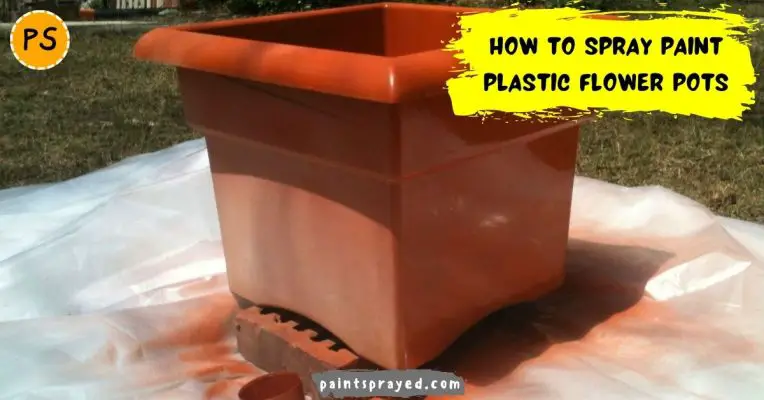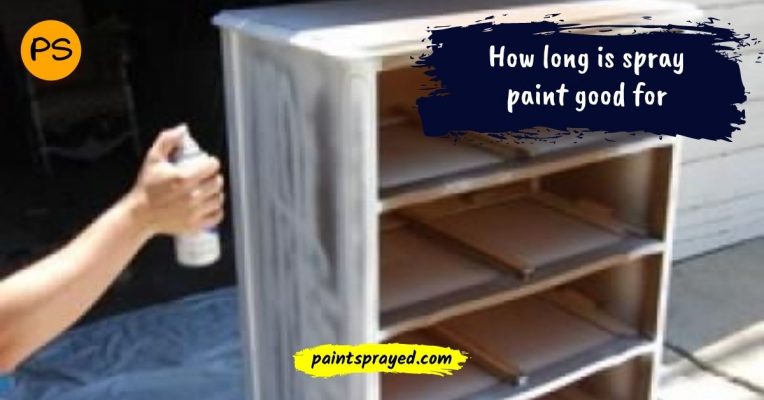Yes, that’s right! Spray painting your pots is easy and economical, and you can help reduce landfill.
Check out the step-by-step instructions for spraying any type of plastic container into a new work of art.
This blog post of mine is based on my experience of many years, which will for sure help you achieve the results you want after completing the paint job on plastic flower pots.
If you are a newbie and don’t know how to spray paint plastic flower pots.
Then don’t miss any point explained in this guide; otherwise, you can mess up the surface and later regret your actions.
How to spray paint plastic flower pots?
Here is the list of some tools which you need to spray paint plastic flower pots at home with great results after finishing.
- Spray paint
- Sandpaper/liquid sandpaper
- Top coat
- Dish soap/ Degreasing cleaner
- Painter’s tape/old newspaper
- Gloves
- Glasses
- Mask
- Paint suite
- Old clothes/rags/towels
Wear protective gear
Before you begin spray painting plastic flower pots, it is important to take the proper safety precautions by wearing protective gear. Here are the steps you need to follow:
- Put on a dust mask to avoid inhaling any paint fumes.
- Put on a pair of rubber gloves to protect your hands from the paint.
- Cover your clothing with an old shirt or apron.
- Cover the work area with a drop cloth or newspaper to protect surfaces from paint.
- Set up a fan to ventilate the area and help disperse the paint fumes.
- Finally, don your safety goggles to protect your eyes from the paint.
By taking these steps, you can ensure that you are protected from the harmful fumes and chemicals in the spray paint.
Clean the pots
To clean your flower pots before spray painting, follow these steps:
- Rinse the pots with water to remove any dirt or debris.
- Pour a small amount of dish soap into each pot and scrub with a sponge or brush to remove any remaining dirt.
- Rinse the pots again with water to remove the soap.
- Let the pots dry completely before spray painting.
Sand down the pots
Before you begin spray painting your sand flower pots, it’s important to sand them down with sandpaper first.
This will help to create a smooth surface for the paint to adhere to. To do this, start by lightly sanding the pot with a fine-grit sandpaper.

Once the entire pot has been sanded, switch to medium-grit sandpaper and sand again.
Finally, use coarse-grit sandpaper to give the pot a rough surface. Once you’ve sanded the pot, you’re ready to begin spray painting!
You can also sand the plastic flower pots with liquid sandpaper
If you’re looking for a quick and easy way to spruce up your flower pots, try sanding them with liquid sandpaper before spray painting.
It’s a simple process that only takes a few minutes, and it can really make a big difference in the overall look of your pots. Just be sure to follow these steps:
- First, clean your pots with soapy water to remove any dirt or debris.
- Next, apply a generous amount of liquid sandpaper to the surface of the pot.
- Use a clean, dry cloth to rub the sandpaper in a circular motion until the entire surface is covered.
- Let the sandpaper dry for about 15 minutes, or until it becomes tacky.
Apply primer to pots
Before you begin spray painting your plastic flower pots, it is important to apply primer first.
This will help the paint to adhere better and provide a more even finish. To do this, simply follow these steps:
- Begin by cleaning the pots with soap and water. This will remove any dirt or debris that could prevent the primer from adhering properly.
- Once the pots are clean, dry them completely.
- Next, apply a thin layer of primer to the pots, using either a brush or a spray can.
- Allow the primer to dry for the recommended amount of time before beginning to paint.
Apply paint to the bottom of plastic flower pots
- Begin by ensuring that the bottom of the flower pot is clean and free of any debris.
- Next, place the flower pot upside down on a sheet of newspaper or a drop cloth.
- Shake the can of spray paint well before beginning to apply an even layer to the bottom of the pot.
- Once the bottom of the pot is coated, allow it to dry completely before flipping it over and using it as usual.
Apply paint on the top of the flower pots
Follow these steps for the best results:
- Start by giving your pots a good cleaning with soap and water. This will help the paint to adhere better.
- Next, use painter’s tape to tape off the areas that you don’t want to paint.
- Now it’s time to start spraying! Use long, even strokes, and be sure to keep the can moving so that you don’t end up with any drips.
- Once you’re finished, let the paint dry for at least 24 hours before adding your plants.
Apply topcoat on plastic flower pots
After you have spray painted your plastic flower pots, it is important to apply a topcoat in order to protect the paint job and extend the life of the pots. To do this, simply follow these steps:
- Allow the paint to dry completely before starting.
- Apply a thin layer of topcoat evenly across the surface of the pot.
- Allow the topcoat to dry completely before using or handling the pot.
- Repeat steps 2-3 as needed to maintain the paint job and protect the pots.
What kind of paint do you use on plastic flower pots?
What is the best way to paint plastic plant pots?
You can use acrylic paint on plastic flower pots. It’s a water-based paint that adheres well to plastic and dries quickly. It’s also easy to clean up with water.
Before painting, make sure to clean the plastic pots and let them dry completely.
You may also want to apply a plastic primer before applying the paint, to help the paint adhere better.
How do you spray paint plastic containers?
The best way to paint plastic plant pots is to first clean the surface of the pot, removing any dirt or debris. Allow the pot to dry completely before painting.
Then, apply a plastic primer specifically designed for plastic surfaces to the pot. This will help the paint adhere better to the plastic.
Once the primer is dry, you can begin applying the acrylic paint.
It is recommended to use a brush or roller specifically designed for use with acrylic paint, and apply the paint in thin, even coats.
Avoid using too much paint at once, as this can cause drips and an uneven finish. Allow each coat to dry completely before applying the next one.
Depending on the color and finish you want to achieve, you may need to apply multiple coats of paint.
Finally, it’s a good idea to apply a clear, water-resistant sealer to the pot once the paint is dry to protect the paint and make it more durable.
It’s also important to note that you should avoid painting the inside of the pot or any area that will come into contact with soil or water, as the paint may flake or chip off over time.
Do you need primer before spray painting plastic?
Spray painting plastic containers is a relatively easy process, but there are a few key steps you should follow to ensure a smooth and even finish:
- Clean the plastic container thoroughly to remove any dirt, dust, or debris. Use a mild detergent and water to scrub the surface, and then dry it completely.
- Apply a plastic primer specifically designed for plastic surfaces to the container. This will help the paint adhere better to the plastic.
- Shake the spray paint can well before use. Hold the can about 8-10 inches away from the surface of the container, and apply the paint in light, even coats. Be sure to keep the can moving as you spray to avoid drips and runs.
- Allow the paint to dry completely between coats. Depending on the color and finish you want to achieve, you may need to apply multiple coats of paint.
- Once the paint is dry, apply a clear, water-resistant sealer to the container to protect the paint and make it more durable.
It’s important to make sure you’re using a spray paint that is specifically designed for use on plastic surfaces, and that you’re using it in a well-ventilated area.
Also, make sure you’re following the manufacturer’s instructions and safety precautions on the can.
FAQ’s of How to spray paint plastic flower pots
Conclusion of how to spray paint plastic flower pots
Hope you liked the complete guide on how to spray paint plastic flower pots at home and achieve great results by following this guide of mine.
If you have any confusion in your mind popping up let me know in the comments section and I and my painter fellows will for sure answer your query and will sort out your problem.
If you find this guide helpful in spray painting plastic flower pots then kindly share it with those who are in trouble painting flower pots.

Matthew Edward is a professional painter who loves to paint and wants to share useful tips and tricks which he had learned in many years of experience in painting. He also used many products that can be used for painting he has tried and tested each and every product to give an unbias opinion about it in his review. This blog is very useful for those newbies who want to learn painting without making mistakes.






